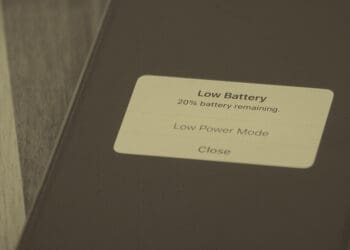Like a parent, a compliance officer’s job often involves establishing processes and systems to ensure the program is self-sustaining. But letting go is easier said than done.
So many compliance professionals are tuned in to doing what is right for an organization. Our job is to see around corners, meticulously oversee and control the controllable while ensuring regulations are followed and risks are managed.
We are focused on identifying and mitigating risks as much as possible to enable business outcomes — and sometimes, we can get carried away with these finely tuned skills and muscles. This is especially true when our inherent nature to manage situations bleeds into our personal life in any of our relationships. If you find yourself hovering over every aspect of the program or your relationships with a watchful eye, it might be time to reassess your approach.
An example of this (and timely for those with children headed to college) is helicopter parenting, which is characterized by an over-involvement in your child’s life, often driven by a desire to protect them from failure or harm. While the intentions are noble, this approach can stifle your child’s development, hinder their problem-solving skills and create unnecessary stress for both of you. As a compliance professional, your instinct to control and oversee can be particularly strong, but recognizing the need to step back is crucial for growth.
The same is true within corporations. Compliance should be part of the DNA such that the compliance officer doesn’t need to be at every interaction for the right outcome to happen. The structures, training, and DNA-driven decision-making in the business should be able to happen whether compliance dictates the parameters or is focused instead on enabling structures for appropriate decision-making.
We also know that compliance professionals can also experience damage to their well-being from the helplessness felt when organizations don’t always make decisions in lock-step with the risks as we see them. So, how do we learn to let go in productive ways?
The first step in transforming an overinvolved style is acknowledging that being overly prescriptive and overly involved might be counterproductive. Habits that depend on your own personal involvement don’t foster independence, they are predicated on creating dependency. Such levels of involvement and control aren’t healthy for any relationship, including the role we play in organizations. The keys to success are building for a future where dependence isn’t needed for good outcomes. That doesn’t lessen the role of the compliance officer (or parent); it changes the parameters of how we provide value.
Establishing clear boundaries in compliance to ensure processes are followed without micromanaging can apply to any relationship. For example, in parenting we might choose to define areas where the child needs to take the lead and manage their own responsibilities. This might involve setting guidelines rather than controlling every decision or outcome. Enabling good decision-making without the need for physical presence at every meeting is critical to migrate toward a sustainable future.
The Art of Maintaining During Strategic Pauses: Sustaining Yourself, Your Teams & Compliance Programs for Success
Strategic pause can help prevent burnout
Read moreDetailsSometimes shifting to a support role rather than the initial steps of building can be quite difficult. The business (or your other relationships) may have needed you intensely in the beginning and reducing reliance can sometimes feel unnatural, but it is healthy. Instead of overseeing and micromanaging every aspect, shift to a supportive role. Be there to offer guidance and encouragement when they asked, but resist the urge to be involved everywhere all at once, all the time. Don’t intervene unnecessarily because it limits your ability to recognize growth. Think of yourself as a coach rather than a manager, providing support and feedback rather than dictating every play.
Just as Elsa in “Frozen” learns to let go of her fears and embrace her true self, adopting a more hands-off style involves relinquishing control and trusting in the programs you have built, the relationships you have developed and the frameworks you provided. It’s about finding a balance between guidance and autonomy, and allowing yourself the latitude not to be tied to an outcome you have no control over. Businesses and relationships tend to flourish in an environment of trust and support.
So let go of the need to control to make sure that you focus on areas where you have the ability to have impact and trust in your own ability to enable good decision-making — whether it is at your organization or for your child as they head off to the exciting promises of adulthood. Your own well-being is better served by a bit of removal from an outcome that is not guaranteed and a focus on doing your best with the process.




 Lisa Beth Lentini Walker, who began contributing to CCI in 2022 as Well-Being Editor, is the CEO of Lumen Worldwide Endeavors, a firm specializing in compliance, governance and ethics consulting. She is a National Board Certified Health & Wellness Coach (NBC-HWC) and a certified meditation and mindfulness specialist. Lisa Beth has led award-winning legal and compliance departments within large public corporations (including a Fortune 50), privately held enterprises. She does this by strategically aligning resources to create efficiencies and advising the board of directors to further strategic initiatives while mitigating risks in all aspects of the domestic and global operations. Lisa Beth co-authored the book,
Lisa Beth Lentini Walker, who began contributing to CCI in 2022 as Well-Being Editor, is the CEO of Lumen Worldwide Endeavors, a firm specializing in compliance, governance and ethics consulting. She is a National Board Certified Health & Wellness Coach (NBC-HWC) and a certified meditation and mindfulness specialist. Lisa Beth has led award-winning legal and compliance departments within large public corporations (including a Fortune 50), privately held enterprises. She does this by strategically aligning resources to create efficiencies and advising the board of directors to further strategic initiatives while mitigating risks in all aspects of the domestic and global operations. Lisa Beth co-authored the book, 








